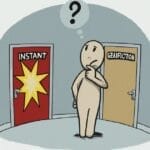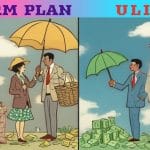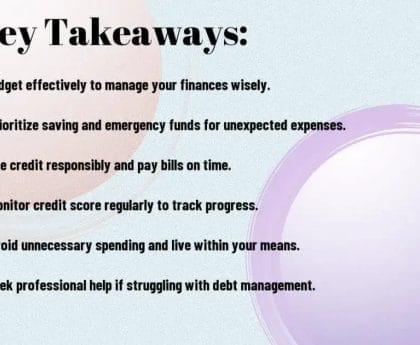Extricating oneself from the perpetual grasp of debt can be a daunting task, but it is not impossible. Many individuals find themselves trapped in a cycle of fiscal irresponsibility, mounting interest rates, and the overwhelming pressure of financial burden. However, some strategies can provide relief and pave the way towards long-term financial freedom. In this blog post, we will discuss effective methods for breaking free from the debt cycle, and empower you with the tools necessary to regain control of your financial stability and ultimately achieve financial independence.
Key Takeaways:
- Understanding the Debt Cycle: It is crucial to recognize the patterns and behaviors that contribute to the debt cycle in order to break free from it. This includes understanding the impact of interest rates, minimum payments, and impulsive spending.
- Creating a Financial Plan: Developing a comprehensive financial plan is essential for long-term financial freedom. This includes setting realistic goals, tracking expenses, creating a budget, and prioritizing debt repayment.
- Building Healthy Financial Habits: Changing spending habits and developing a disciplined approach to managing finances is key to breaking free from the debt cycle. This may involve seeking professional help, adopting frugal living strategies, and finding additional sources of income to accelerate debt repayment.
Understanding Debt Dynamics
Before we can break free from the debt cycle, it’s crucial to understand the dynamics of debt and how it can accumulate over time. By gaining insight into the factors that contribute to debt, we can develop effective strategies for managing and ultimately eliminating it.
How Debt Accumulates
Debt accumulation can occur through a variety of means, including taking out loans for major purchases such as homes or vehicles, using credit cards for everyday expenses, or borrowing money to cover unexpected financial emergencies. Interest and fees can quickly multiply the amount owed, leading to a cycle of debt that becomes increasingly difficult to escape.
Recognizing High-Risk Debt Behaviors
Debt can become particularly burdensome when individuals engage in high-risk behaviors such as overspending, relying on payday loans, or making only minimum payments on credit card balances. These behaviors can lead to mounting debt and a sense of financial overwhelm that impedes the ability to achieve long-term financial stability.
Recognizing these high-risk behaviors is crucial to break free from the debt cycle and establish a solid foundation for future financial success.
Strategies to Combat Debt
To break free from the debt cycle, it’s crucial to implement effective strategies to combat and reduce your debt burden. By taking proactive steps, you can regain control of your finances and work towards long-term financial freedom.
Budgeting Techniques for Debt Reduction
Combatting debt starts with creating a realistic budget that prioritizes debt repayment. By allocating a portion of your income towards debt reduction each month, you can make steady progress towards eliminating your debts. Consider using the snowball or avalanche method to prioritize which debts to pay off first, based on interest rates or outstanding balances. Additionally, tracking your expenses and identifying areas where you can cut back can free up more funds to put towards debt repayment.
Debt Consolidation and Refinancing Options
An effective way to combat multiple debts is by exploring debt consolidation and refinancing options. By consolidating high-interest debts into a single loan or refinancing existing loans at a lower interest rate, you can simplify your repayment process and potentially save money on interest over time. Consolidating credit card debt or refinancing student loans are common approaches to streamlining debt repayment and reducing the overall interest burden.
With debt consolidation and refinancing, it’s important to carefully compare offers from different lenders and consider the long-term impact on your finances. While these options can provide relief from high-interest debts, they also come with potential risks and costs that should be thoroughly evaluated before making a decision.
Building a Sustainable Financial Future
Keep in mind that building a sustainable financial future requires long-term planning and commitment. It is essential to adopt strategies that promote financial stability and freedom over the years.
Creating an Emergency Fund
To build a sustainable financial future, it is crucial to create an emergency fund that can cover at least three to six months’ worth of living expenses. This fund provides a safety net in case of unexpected events such as job loss, medical emergencies, or major home repairs. By prioritizing the establishment of an emergency fund, you can protect yourself from the negative impact of unforeseen circumstances and avoid falling back into the debt cycle. Start by setting aside a small portion of your income each month until you reach your desired emergency fund goal.
Investment Strategies for Wealth Accumulation
Sustainable wealth accumulation is possible through strategic investment. By diversifying your investment portfolio with a mix of stocks, bonds, and real estate, you can maximize returns while minimizing risks. It is important to consider long-term investment options that align with your financial goals and risk tolerance. Additionally, seeking professional financial advice can help you develop a customized investment plan that suits your needs and objectives.
This subsection discusses investment strategies that are vital for achieving long-term financial freedom. It emphasizes the importance of diversifying investment portfolios and seeking professional guidance to maximize returns while minimizing risks.
Maintaining Financial Discipline
For individuals looking to break free from the debt cycle, maintaining financial discipline is crucial. It requires a commitment to making sound financial decisions, living within your means, and being intentional about your spending and saving habits. While it may not be easy, staying disciplined is essential for long-term financial freedom.
Tools and Resources for Ongoing Financial Health
Health and maintaining financial discipline is of utmost importance to break free from the debt cycle. Many individuals find it helpful to utilize budgeting apps, seek out financial counseling services, and stay informed about personal finance through books, podcasts, and reputable websites. These tools and resources can provide ongoing support and guidance to help individuals stay on track with their financial goals.
The Role of Mindset in Avoiding Future Debt
An individual’s mindset plays a critical role in breaking free from the debt cycle and avoiding future debt. Having a positive and proactive mindset can lead to making thoughtful financial decisions, setting achievable goals, and maintaining resilience in the face of challenges. It is important to recognize the power of mindset in shaping one’s financial habits and to actively work on developing a healthy financial mindset.
Any individual can benefit from examining their mindset towards money and debt and making necessary adjustments for long-term financial success. By cultivating a mindset of financial responsibility, resilience, and abundance, individuals can set themselves up for a future free from the burden of debt.
Breaking Free from the Debt Cycle – Strategies for Long-Term Financial Freedom
Conclusively, breaking free from the debt cycle requires a combination of discipline, planning, and perseverance. By implementing strategies such as budgeting, debt repayment plans, and increasing income, individuals can begin the journey towards long-term financial freedom. It is important to stay committed to the goal of becoming debt-free and to seek support from financial advisors or counselors when necessary. By taking proactive steps and making smart financial decisions, it is possible to break free from the debt cycle and achieve a secure financial future.
FAQ
Q: What is the debt cycle?
A: The debt cycle refers to the pattern of borrowing money, making payments, and then borrowing again to cover living expenses, ultimately leading to a cycle of constant debt accumulation.
Q: How can I break free from the debt cycle?
A: Breaking free from the debt cycle requires a combination of strategies such as creating a budget, reducing unnecessary expenses, increasing income through side hustles or a second job, and prioritizing debt payments by using the snowball or avalanche method.
Q: How can I achieve long-term financial freedom?
A: Achieving long-term financial freedom involves not only breaking free from the debt cycle but also creating an emergency fund, saving for retirement, and investing in assets such as stocks, real estate, or a small business. It also requires discipline and a long-term mindset to avoid falling back into the debt cycle.






